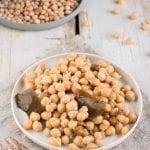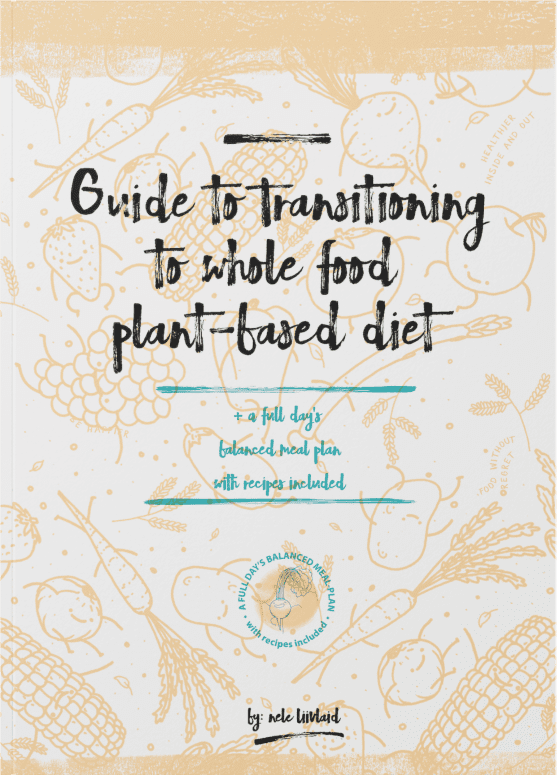Description
Learn how simple it is to sprout chickpeas or garbanzo beans without a sprouter for maximum health benefits and improved flavour. Use raw and cooked sprouted chickpeas in hummus, curries, stews, salads and Buddha bowls or snack on them raw.
Ingredients
Instructions
How to Soak Chickpeas
- First, spread the chickpeas out to remove small stones, debris or damaged beans. Then, rinse them thoroughly under cool running water.
- Next, place the chickpeas in a glass bowl and soak in filtered water for 8-12 hours (min 4 hours). The amount of water depends on the volume of the chickpeas. Make sure there is enough water as chickpeas expand to over double their size. If you can, change the water 2 times. Some sources recommend putting the bowl into fridge when soaking longer than 6 hours, but I have always ignored that unless it’s very hot inside.
- Optionally, add an acidic medium (1 tablespoon of apple cider vinegar or lemon juice per each cup of dry chickpeas) to soaking water to mimic soil’s acidity. Also to decrease the content of the raffinose family of sugars even further, add baking soda to the soak water (about 1/16 teaspoon per quart/litre).
- Finally, drain the soaking liquid, and then rinse them with clean water. Now, cook them or continue with sprouting process (both explained below).
How to Quick Soak Chickpeas
If you don’t plan to sprout the chickpeas, you may also quick soak them. Here’s what you should do:
- First, add chickpeas to a saucepan along with water and boil them for 5 minutes.
- Then, turn off the heat and let them soak for 1-2 hours at which point they’d be ready to be cooked.
How to Sprout Chickpeas
- Start by soaking the chickpeas for 8-12 hours as per instructions above.
- Rinse and drain the soaked chickpeas and leave them in the sieve over a bigger bowl. Cover with clean cloth. Spread them out as much as you can to let the air flowing and prevent mould developing.
- Stir as well as rinse and drain the chickpeas several times daily until visible sprouts (that look like white tails) emerge from the chickpeas. It’ll take about 12 hours.
- When the sprouts have grown into desired length, store them in sealed container in fridge for later use.
How to Cook Sprouted Chickpeas
- If you’re cooking soaked and not sprouted chickpeas, skim off any skins that floated to the surface while soaking, drain the soaking liquid and then rinse them with clean water.
- Next, for extra flavour and better digestibility, add a bay leaf and a small piece of kombu seaweed on the bottom of a saucepan. That’s totally optional, but I strongly suggest doing the bay leaf at least. For maximum flavour and benefits, make sure you use organic bay leaf that is intact. I’ve also tried using the conventional bay leaves and found that the difference (in terms of flavour) is incomparable.
- Then, pour in the sprouted chickpeas (or soaked) and add filtered water. The liquid should be about 5 cm (2 inches) above the top of the garbanzo beans. If you want your chickpeas to become extra mushy, add a bit of baking soda to boiling water
- Bring them to a boil, and then reduce the heat to simmer. Skim off the foam that develops in the first 10-15 minutes. I prefer to leave the chickpeas simmer without lid to avoid the water to boil over. The chickpeas will be tender in 1-1.5 hours. If the chickpeas are still hard, extend the cooking time. Should too much water evaporate, boil some more in the kettle and pour into the pot.
Notes
Read about cautions with kombu seaweed from my Lentil Loaf post.
Nutrition
- Serving Size: 100g, 3.5oz
- Calories: 178 kcal
- Sodium: 8mg
- Fat: 4g
- Carbohydrates: 24g
- Fiber: 3g
- Protein: 10g


